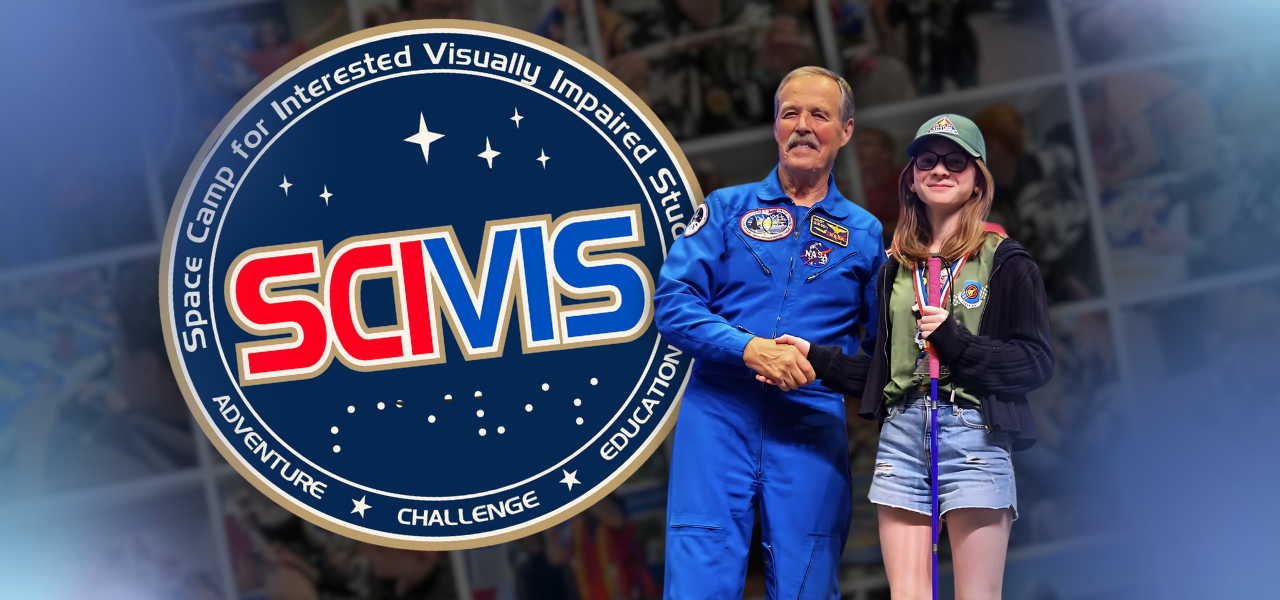Seeing the Universe with NASA: The Story of a Space Camp
The Kennedy Space Center and the Mission Control Center in Houston are NASA’s most iconic locations. They are known to everyone interested in space. These are the places where people come to witness the launch of crewed spacecraft. This is where dreams were born — dreams of seeing the vast Universe and giving a chance to those who cannot see it.
But how do you show stars to someone who cannot perceive light? How do you convey the beauty of Earth from orbit to someone who has never seen a horizon?
NASA has an answer. And it’s no less impressive than a rocket lifting into the sky.

A Heroic Beginning
It all began as a triumph of two superpowers emerging victorious from World War II. It was an era of heroes: Wernher von Braun and Sergei Korolev, Yuri Gagarin and Alan Shepard. Their vision, charisma, and leadership turned humanity’s cosmic dreams into reality — from wondering what’s on the far side of the Moon or whether there’s life on Mars, to wanting to see Earth from space and understand what’s happening to it.
Space as a System
By the 1980s, the way we thought about space had changed. The era of dreams gave way to professionalism. Projects like Apollo-Soyuz, the Hubble Space Telescope, satellite communication, and navigation are still inspiring, but as triumphs of intellect and human nature. Space became an industry, like oil extraction or aircraft manufacturing.
This highly technical field began to attract more people — not only aspiring astronauts, but also engineers, designers, and programmers. Yet, there were many who, due to visual impairments, were excluded from participating. SCIVIS was created for them.
Space Camp for Interested Visually Impaired Students
In 1982, the Marshall Space Flight Center in Alabama launched Space Camp® to inspire young people to engage in space-related careers. In 1989, the first session of Space Camp for Interested Visually Impaired Students (SCIVIS) took place.
SCIVIS is a full-fledged part of Space Camp®, where children with visual impairments can participate in everything: spacecraft design, simulated space missions, flight operations, and more. In just one week, these children not only explore new skills, but also connect with peers who share similar life experiences.
The entire environment is adapted for blind and low-vision participants: computers with screen readers, Braille keyboards, large print and tactile fonts, magnifiers, and assistive technologies. White canes lie beside headsets and modern computers — making space exploration truly accessible.
Those Who Make It Possible
Just as important as the campers are the companions — vision specialists, teachers, and accessibility consultants. Their role is not just to support the children, but to train Space Camp® staff who may have no prior experience working with blind students.
They help each participant become more independent: arriving on time, remembering their cane, and communicating in English. Away from home, in a new setting, children gain the confidence they need — thanks to those who guide them.
Learning Program
The SCIVIS curriculum aligns with U.S. national education standards. In addition to academic knowledge, students gain:
- skills in writing reports;
- orientation and mobility in unfamiliar environments;
- teamwork and project coordination;
- communication and negotiation experience.
These skills prepare students not just for college and careers in science, but for independent, fulfilling lives. SCIVIS builds not only professional, but also essential life competencies needed for full participation in society.
SCIVIS: More Than a Camp
SCIVIS is more than a NASA program. It’s a unique opportunity for young people with visual impairments to become part of the space community. Here, limits are redefined, barriers are broken, and technology, support, and knowledge enable full participation.
This program nurtures a new generation of scientists, engineers, and researchers for whom space is not a distant dream but a tangible field of work. It demonstrates how inclusion and innovation foster equal opportunities — and how people with disabilities not only adapt but also thrive and contribute to science and society.
